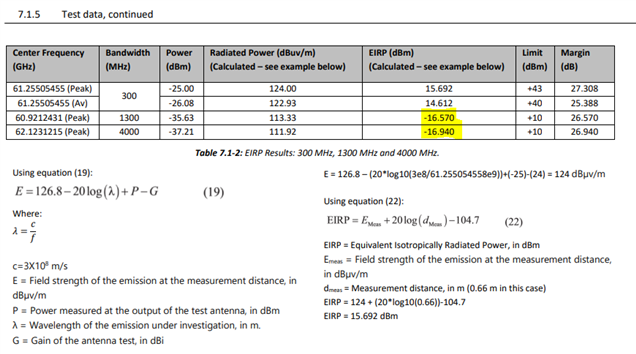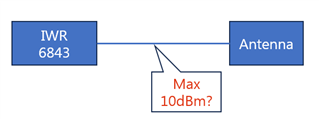Other Parts Discussed in Thread: IWR6843, , IWRL6843
Tool/software:
Hello team,
Customer referred below E2E post and asked me few questions. Can I ask your help on below?
- When looking 'fcc_47_cfr_part_15_255_subpart_c.pdf' document, there is below table. According to AWR6843(or IWR6843) datasheet, TX power is 12dBm. Considering antenna gain, EIRP should be around 15dBm or a bit higher. However, below table says higher bandwidth has much lower EIRP. How should we interpret this? Also, when I calculate EIRP with below calculation, it should be around 5dBm rater than -16dBm. Could you please clarify more here?

- .
- .
- Also, when looking below table in same document, PK Conducted power is described as 14.861, -23.870, -23.403dBm. Similar with above question, how could it be so much different for different bandwidth? I should be around 12dBm(TX power of device), right? Do we have numbers that which TX power we used when getting certification?

- .
- .
- When looking 'EN 305 550 - V2.1.0 - Short Range Devices (SRD); Radio equipment to be used in the 40 GHz to 246 GHz frequency range; Harmonised Standard for access to radio spectrum' document, there is below table. What does the highlighted description mean? Does it mean that RADAR device has to limit its output power less than 10dBm? Meaning, EIRP(including antenna gain) limit is 20dBm but RADAR chip shouldn't exceed 10dBm TX power?
-


.
Your kind help would be appreciated.
Regards,
Victor Park

